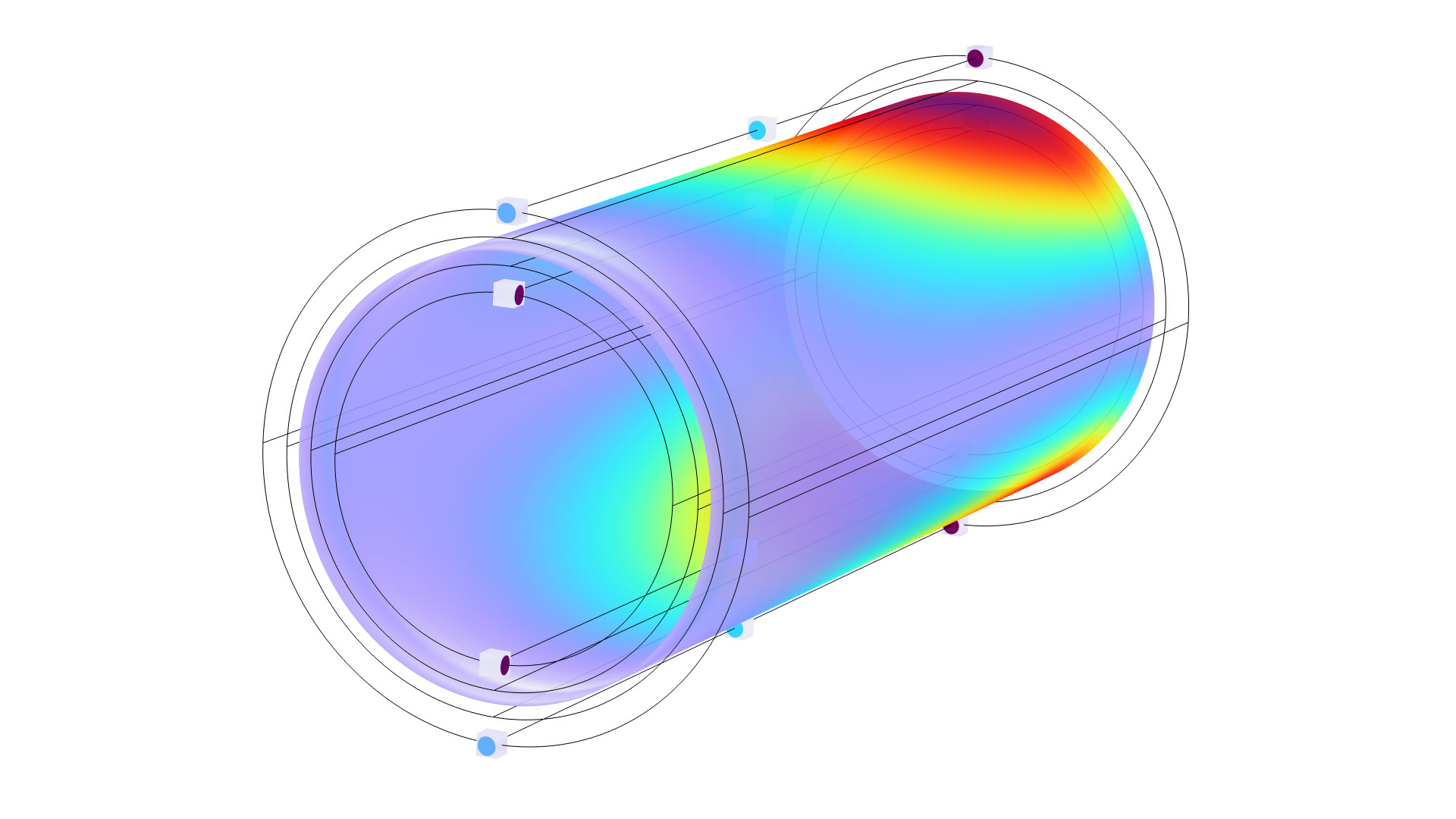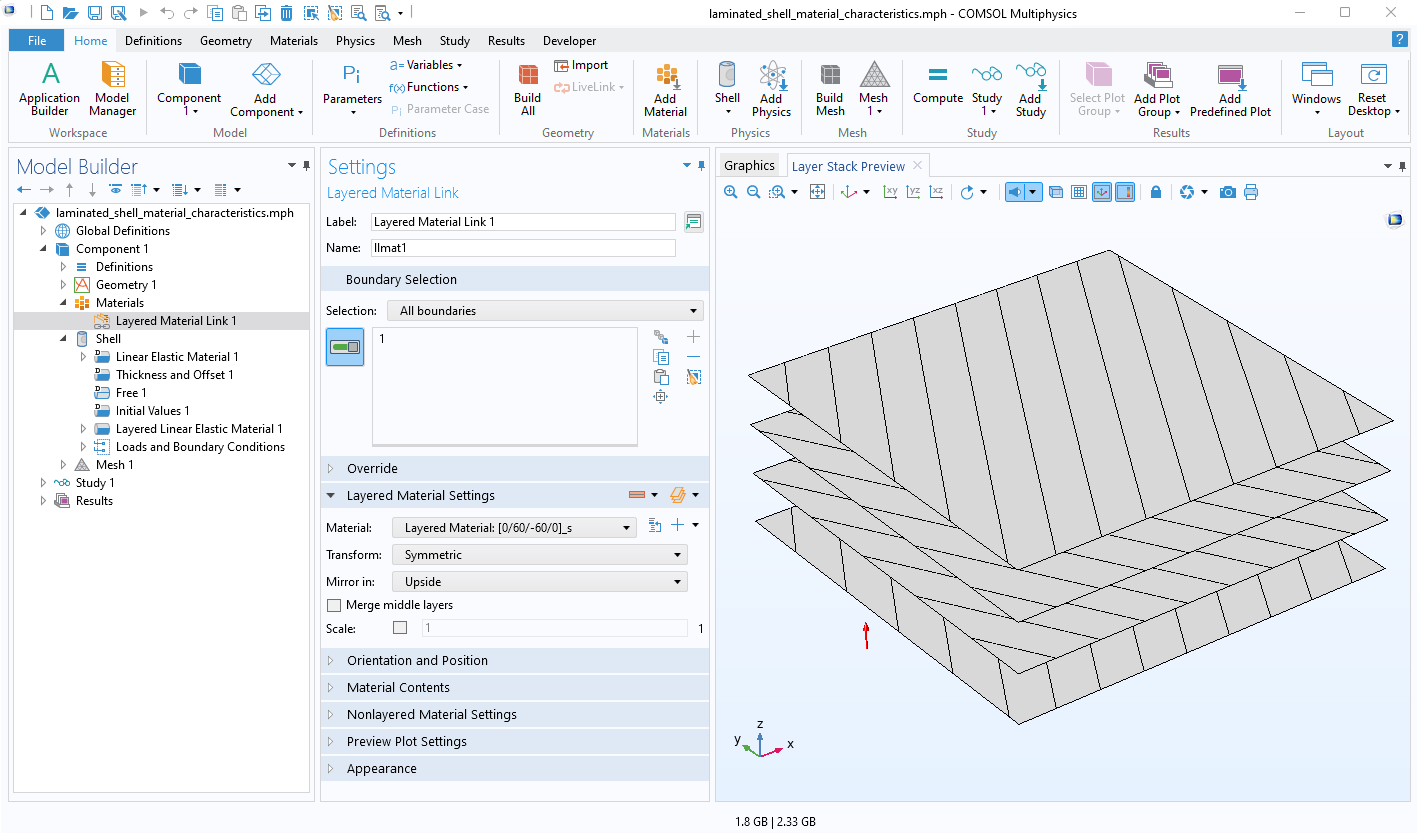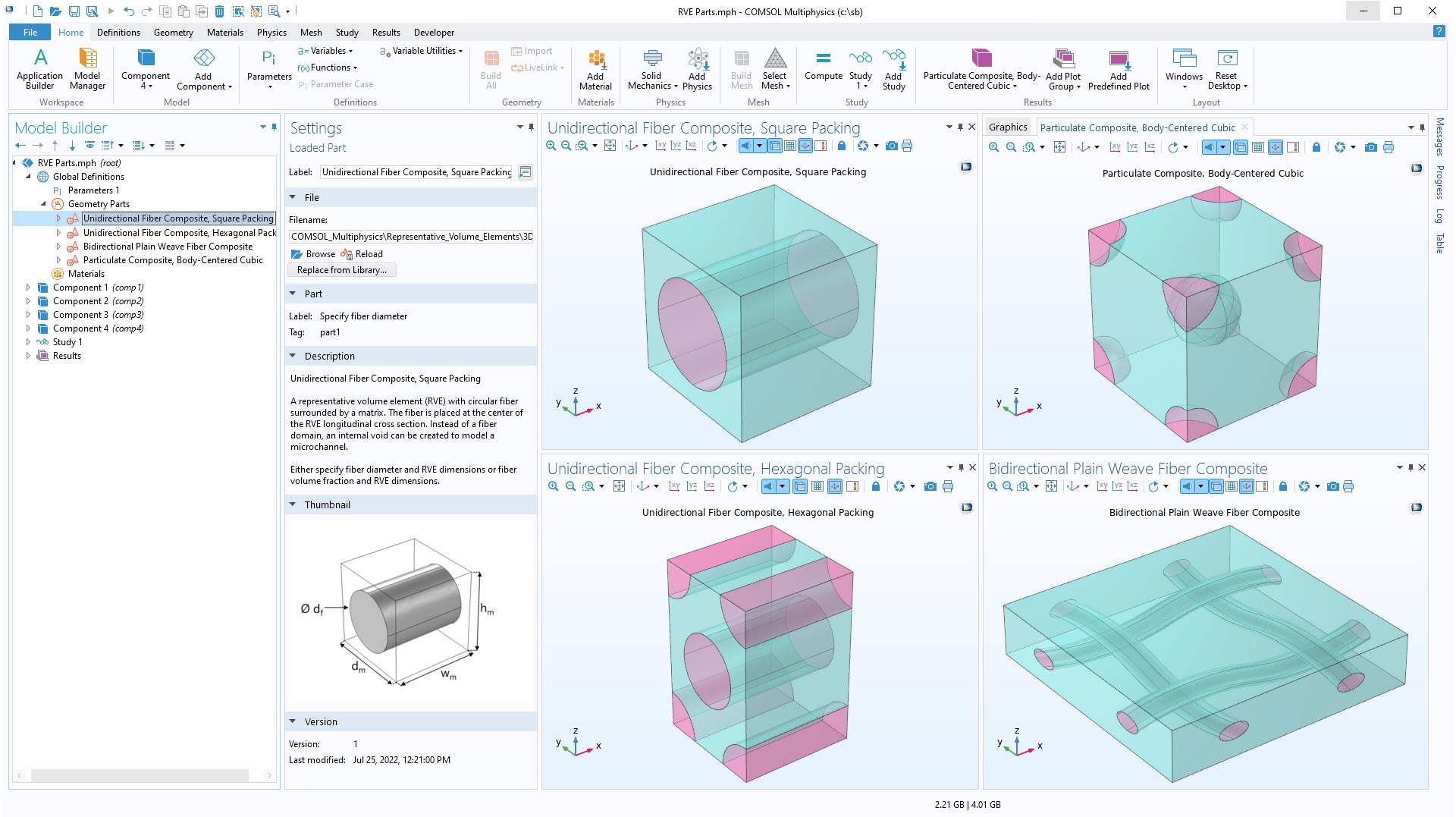support@comsol.com
Composite Materials Module Updates
For users of the Composite Materials Module, COMSOL Multiphysics® version 6.1 provides improved contact functionality in the Layered Shell interface, performance improvements for the Layered Linear Elastic Material node, and one new tutorial model. Learn more about these updates below.
Improved Contact Functionality
The Contact feature in the Layered Shell interface is now similar to the corresponding node in other Structural Mechanics interfaces. It includes the Penalty, dynamic and Augmented Lagrangian, dynamic contact methods that are essential for modeling dynamic contact events. In addition, the Friction, Slip Velocity, Adhesion, and Decohesion subnodes are now available in the Contact feature for efficient modeling of various contact phenomena. When contact pairs are present in a model, a default Contact node is automatically added to the Layered Shell interface.
Performance Improvement in Layered Linear Elastic Material
In the Shell and Membrane interfaces, when the Layered Material Link or Layered Material Stack node is transformed symmetrically, antisymmetrically, or repetitively, a combination of numerical and analytical methods are used to compute the stiffness matrix. As a result, assembly time and computation time are significantly reduced.
Support for Large Strains in the Layered Linear Elastic Material
For geometrically nonlinear analyses, multiplicative decomposition of strains is now, by default, used for the Layered Linear Elastic Material node in the Shell interface. This is important for accuracy in the case of finite deformations. An Additive strain decomposition check box has been added to the settings for cases when you may want to recover the old behavior.
Library of Parts for the Homogenization of Microstructures
In the part libraries, a new folder named Representative Volume Elements has been added to the COMSOL Multiphysics branch. It contains numerous parameterized geometries for common microstructures, such as fibers, pores, and particulate composites. These geometries can be used to compute effective material properties using the representative volume element (RVE) method, for example. The Micromechanics of Failure: Multiscale Analysis of a Composite Structure and Micromechanics and Stress Analysis of a Composite Cylinder models showcase this new addition.
New Tutorial Model
COMSOL Multiphysics® version 6.1 brings a new tutorial model to the Composite Materials Module.
Micromechanics of Failure: Multiscale Analysis of a Composite Structure

Application Library Title:
composite_multiscale


